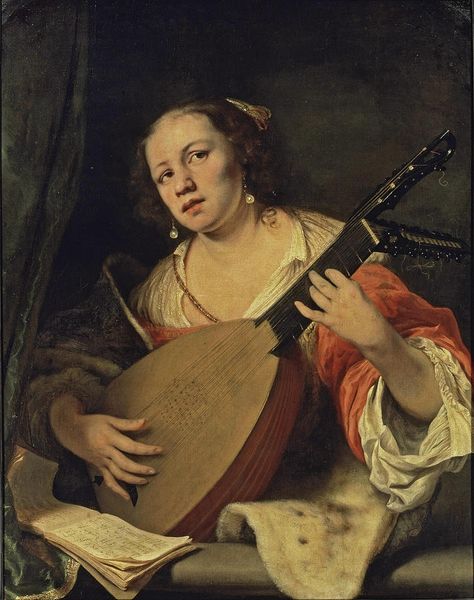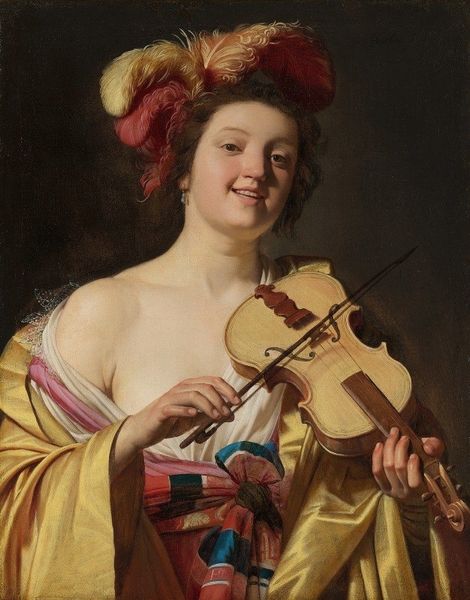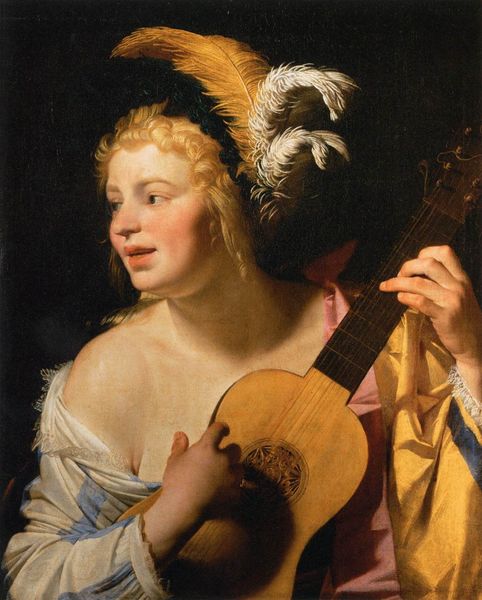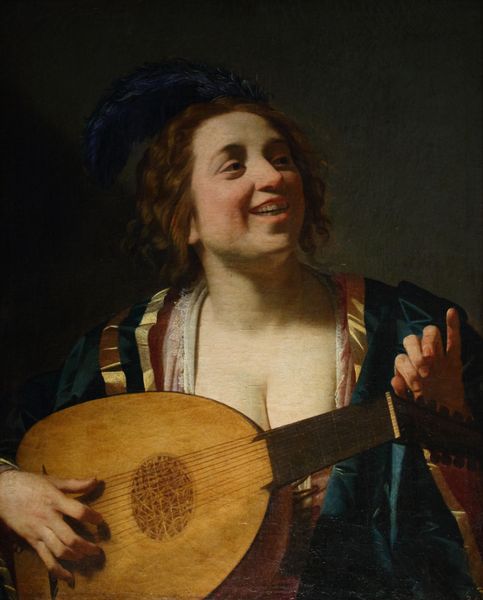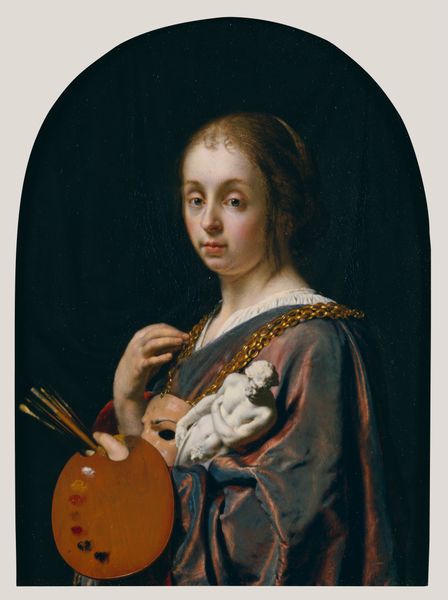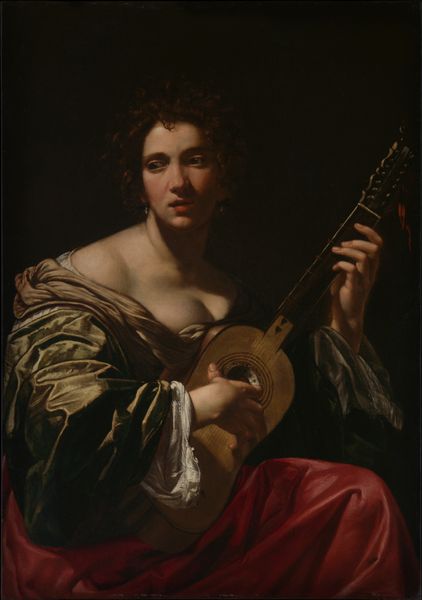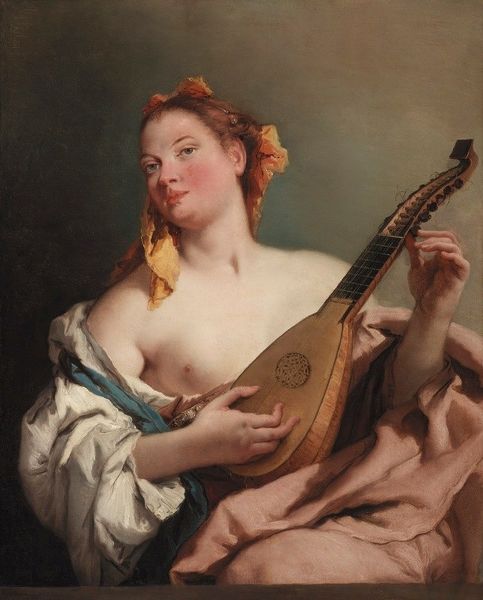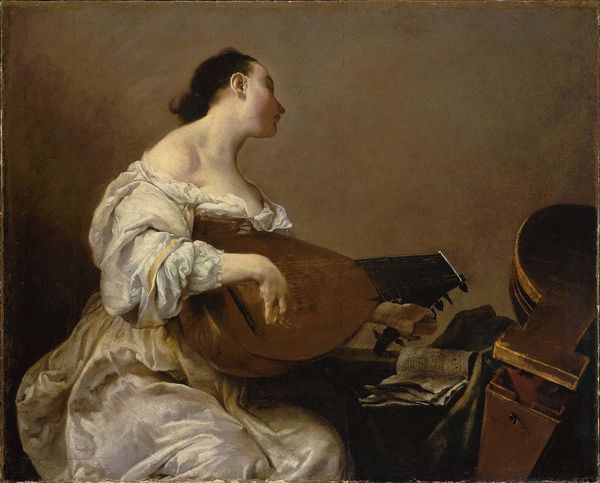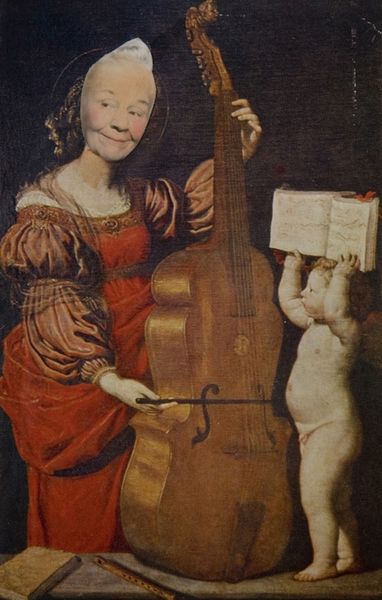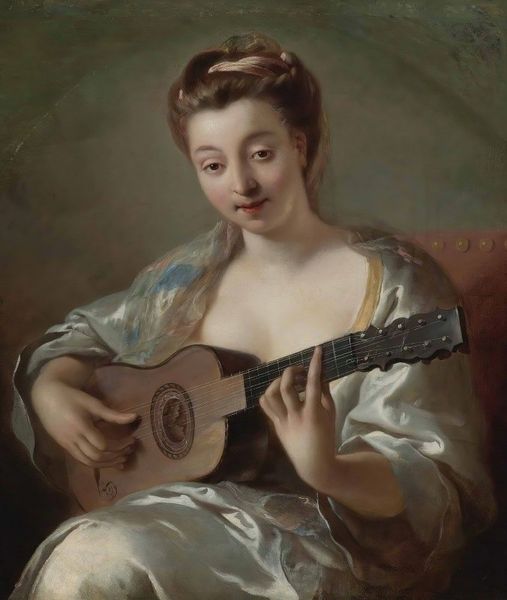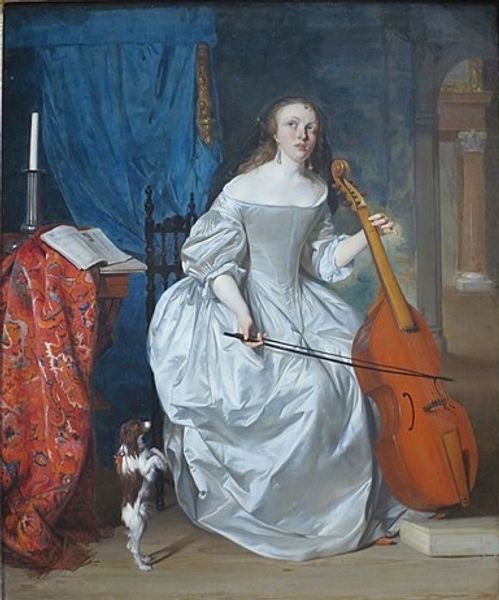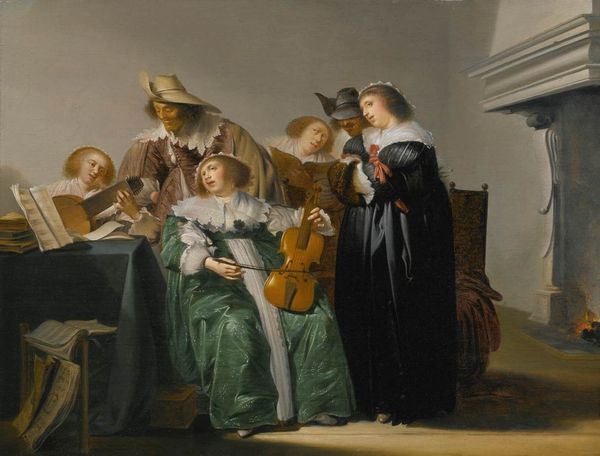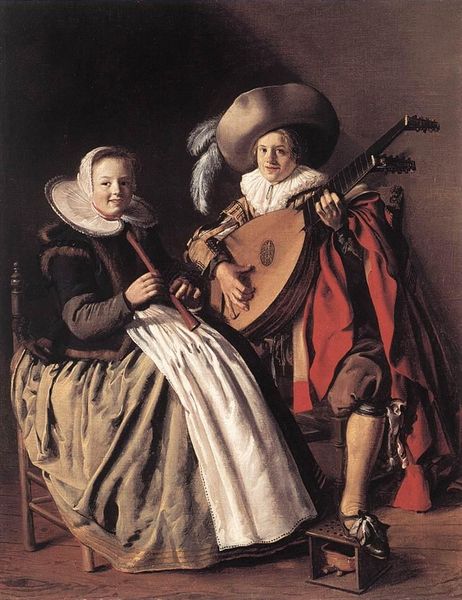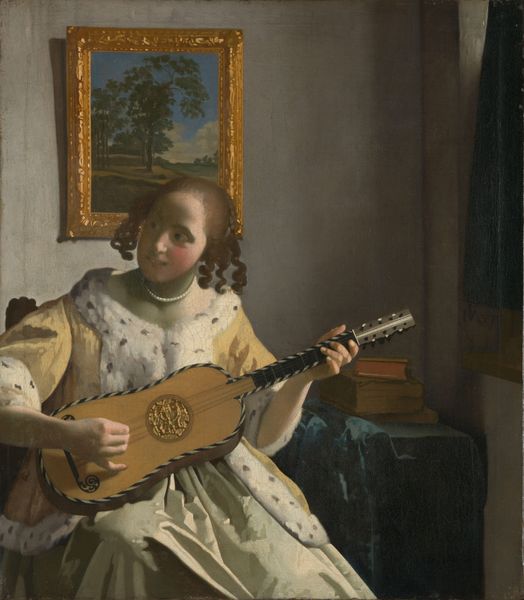
painting, oil-paint
#
baroque
#
painting
#
oil-paint
#
genre-painting
#
history-painting
#
musical-instrument
#
nude
#
portrait art
#
erotic-art
Dimensions: 54 1/2 x 43 3/4 in. (138.4 x 111.1 cm)
Copyright: Public Domain
Editor: This is Bartholomeus van der Helst’s "The Musician" from 1662. The combination of musical instruments and a partially undressed figure creates such a curious atmosphere. How do you interpret this work? Curator: I'm drawn to the materials first: the canvas itself, the expensive oil paints that create such a range of textures, and, of course, the instruments themselves. What woods were used? Where were they sourced? These objects speak to trade routes, skilled craftsmanship, and the rise of a wealthy merchant class who could afford such luxury goods, and commissioned such artworks. The musician's state of undress, how does it comment on the subject's relationship to both the means and result of their labor? Editor: That's interesting. I was focused on the subject, I didn’t really consider how the physical making influenced my viewing. Curator: Think about the labor involved in producing those pigments alone – the grinding, mixing, and the sourcing of rare minerals. The painting becomes a document of that process as much as a depiction of a "musician". And it wasn't just the artist, consider the workshops where pigments were prepared! How does the image itself elevate and conceal all this effort? Editor: I suppose it reframes "art" as labor too. Seeing art as connected to these real and sometimes quite hidden practices, opens the possibility to other subjects, like women or commoners, instead of monarchs or nobles. Curator: Exactly! How does acknowledging labor challenge traditional boundaries between 'high art' and craft? Is there a class critique implied in the intimate portrayal of an instrument maker's creation and their muses? It prompts a question; What are the connections between materiality, artistry, and socio-economic standing in 17th-century Netherlands? Editor: Viewing it through a materialist lens really makes you think about art production in a completely different way. I’ll be thinking about what kinds of hands these works went through! Curator: Indeed. Material analysis is only one window to appreciate a piece's artistic achievement.
Comments
No comments
Be the first to comment and join the conversation on the ultimate creative platform.
